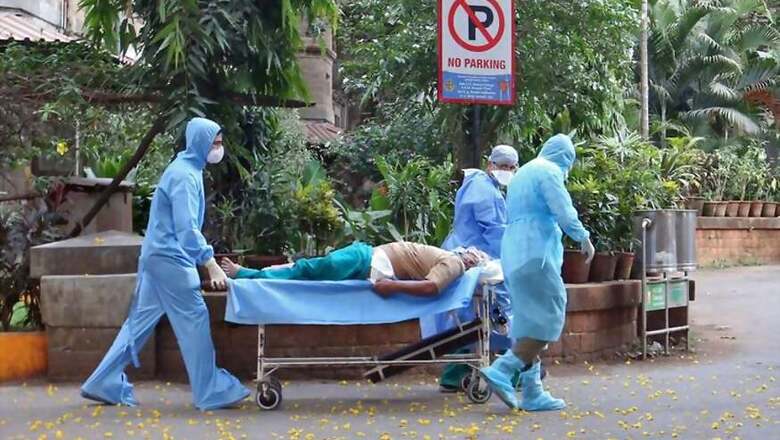
views
Thiruvananthapuram: Kerala will most probably become the first state in India to flatten the COVID-19 curve. And if this is confirmed by the end of the week (April 18), then it can be assumed that the state will also be the first to be free of the novel coronavirus which can be confirmed after about 28 days of no new cases. If this happens by mid-May, it will be an incredible achievement. Other states too are sure to follow but it may take more time considering that clusters are still developing in many states where it is sure to reach stage 3 or community spreading.
All this is due to the state’s healthcare system which works like a well-oiled system from bottom to top. Apart from a good system, enviable pool of dedicated and top-notch doctors and nurses, it is also due to enviable governance and leadership for which chief minister Pinarayi Vijayan and health minister KK Shailaja 'teacher’ who have been micromanaging the crisis can take all credit.
Kerala also got a firm grip on handling such health crises when two waves of the Nipah virus (spread by the fruit bat) hit the state in 2018. Since Pinarayi Vijayan became chief minister in 2016, the corona pandemic is the fifth major public calamity to hit the state: two waves of Nipah, floods in 2018 and 2019 which drowned the state, and now this.
In all these crises, Vijayan has led from the front. “Unless a government is honest, no one will trust it... In Kerala, there has been transparency and honesty. Normally unpleasant data is suppressed. That has not happened in Kerala. The CM and the minister also always accepted technical expert advice,” former health secretary Rajeev Sadanand, who laid the framework of emergency healthcare strategies in the state, told News18.com.
How does the system work? In any system which works efficiently anywhere, the numbers have to be good. Kerala is right on top, sharing space with advanced societies worldwide. Three basic parameters have to be good:
1. Beds per thousand population
Kerala has a lakh of beds for a 35 million population, roughly 2.9 beds for every thousand, very close to Italy’s 3.2 beds or USA’s 2.2 beds per thousand of population.
2. Ratio between doctors and population
Kerala will have one doctor per 200 people in 5 years, compared to the present national average of one doctor for 2,000 people. Jharkhand has only one doctor for 8,000 people. Kerala adds 3,000 medical graduates every year. The WHO norm is only one doctor per thousand.
3. Density of healthcare per square metre
Kerala has 1.5 hospitals per thousand, much lesser than Tamil Nadu’s 4 per thousand.
While the entire country is struggling with a shortage of hospitals, the state with a population of 35 million has more than 135 hospitals that have over 100 beds each. It has 50 hospitals with over 300 beds each. Uttar Pradesh with a 200 million population has only 90 hospitals with over 100 beds each, according to Association of Healthcare Providers official data.
According to the Niti Aayog’s latest statistics, Kerala and Tamil Nadu have been classified as “not improved” in health parameters when compared to 2015-16, but that is because these states have already reached the status of developed nations in this category. Niti Aayog has also praised Kerala for filling up vacancies. Even Tamil Nadu, which has super healthcare facilities, has more vacancies unfilled in government hospitals. Incidentally, the general hospitals in Thiruvananthapuram and Ernakulam are over 150 years old, showing the early beginnings in professional healthcare in Kerala.
Beyond the numbers, the system in Kerala works well from bottom to top. There is a three-tier structure at the base of the pyramid. The lowest-tier workers including auxiliary nurses all know how to trace and track patients/victims. The ambulance system too is geared to respond fast and efficiently. There is also the next level of monitoring where four-five levels of officers call up quarantined people. In the present scenario, for example, a patient quarantined in the Thiruvananthapuram area of Kowdiar posted on Facebook how every day of his quarantine after his return from abroad, he was called up by 10 government officials asking for signs of trouble or need, including local police, area hospital, health official, corporation office and local MLA. Even books which he asked for were delivered to his house. Such attention and care of course beats everything.
To top it all, Kerala produces the best nurses in the world. This is due to a spirit of selfless service inculcated in nurses in Kerala mostly trained in mission hospitals which have existed in the state from colonial days. “Another important factor was the establishment of mission hospitals in remote areas under the auspices of Christian churches. Young girls from the Christian community in Kerala were keen to take up nursing as a career,” says V Raman Kutty in his study of Kerala’s healthcare system. Churches in Kerala have continued this tradition and nursing schools are attached to most mission hospitals in the state.
In treating COVID-19, nursing care is most important since there is no vaccine and no clear protocol of treatment. Kerala has cured 50 per cent of its total of 375 cases till now. That too can be credited to superior nursing care. Even Kasargod’s earlier suspected super spreader, now identified as Aniyathipravu Amir, was discharged from a government hospital on April 12, even as the institute's staff lined up outside to cheer him.
(The author is a senior journalist. Views expressed are personal.)

















Comments
0 comment